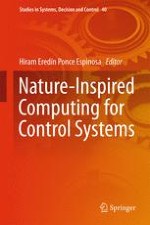2016 | OriginalPaper | Chapter
Bioinspired Control Method Based on Spiking Neural Networks and SMA Actuator Wires for LASER Spot Tracking
Author : Mircea Hulea
Published in: Nature-Inspired Computing for Control Systems
Publisher: Springer International Publishing
Activate our intelligent search to find suitable subject content or patents.
Select sections of text to find matching patents with Artificial Intelligence. powered by
Select sections of text to find additional relevant content using AI-assisted search. powered by
